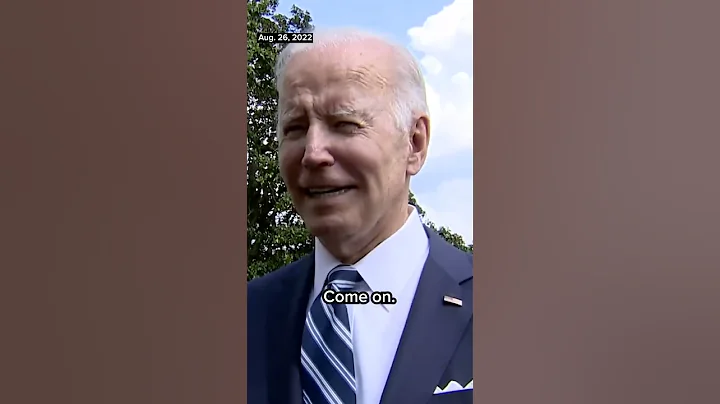Biden officially announced the Group of Seven "Global Infrastructure Plan". What are you most concerned about? Based on reporters' questions, Qin An shared his thoughts on relevant issues with everyone. The purpose is to see clearly the unchanged strategy and decline of the United States and other Western politicians to besiege China, so as to establish that China will win and let more than 1.4 billion Chinese people live a good life. Have firm confidence!

1. Purpose: What is the intention behind the G7 “Global Infrastructure Plan”?
The G7 global infrastructure plan officially announced by Biden is actually "old wine in new bottles", which was proposed as early as last year's G7 summit. However, it was a bit exaggerated last year, claiming that it would invest US$40 trillion before 2035. The purpose is very clear and unabashed, which is to counter China’s “One Belt, One Road” initiative. Sadly, a year has passed and nothing has happened. To this end, this year it was made clear to raise US$600 billion within five years for this plan, which still claims to provide funds for developing countries to build infrastructure. In fact, it is in line with the "One Belt, One Road" initiative advocated by China.
Regarding the actions of this G7 group , we can sort out a series of so-called alliances led by the United States to besiege China. This is only one link. At present, the United States has formed a "3+4+5+7+13+18+" layout to contain China, namely the "core axis" of the United States, Britain and Australia, the "four-party mechanism" of the United States, Japan, India and Australia, and the " Five Eyes Alliance ", the 13 countries of the Group of Seven, the "Asia-Pacific Economic Framework", as well as the 18 members of the Pacific Islands Forum, Japan and Western powers. The Pacific Island countries did not advance smoothly, so the United States, Australia, Japan, New Zealand and the United Kingdom established An informal organization, the "Blue Pacific Partnership" is actually a transitional version of the United States' involvement in the economy and diplomacy of Pacific island countries. In the end, it still has to find a way to include the island countries.

2. Value: What is the apparent value of the G7 “Global Infrastructure Plan”?
basically has no economic significance. The United States has always waged wars abroad and is good at making war fortune. It makes money by providing funds to build infrastructure for developing countries. It is estimated that American politicians have not thought clearly about it themselves, or they have not thought about it at all. In other words, the purpose of Western politicians in promoting this plan is not economic. It is more of a political strategic maneuver and performance in an attempt to compete with the “Belt and Road Initiative” advocated by China. But sadly, last year’s ambitious The global infrastructure plan has been severely shrunk. Anyone with a discerning eye can see that announcing the plan has more of a show-off element, but still doing so has its expected political and strategic significance in at least three aspects: and , which deter China. The deterrent posture of strategic siege; secondly, deceives the country, creating the illusion that the G7 meeting is fruitful and serving votes; thirdly, binds allies and must reflect the leadership of the United States.

3. Differences: What are the differences between the G7 “Global Infrastructure Plan”?
At the G7 summit last year, the United States clearly launched a "global infrastructure construction plan" to counter China's "One Belt, One Road" initiative. At that time, the United States shouted too loudly, saying that by 2035, it would raise US$40 trillion to implement the plan. , the number was so huge that it was called the G7 bragging conference by the media at the time. Compared with this time, there are several characteristics: . First, the investment amount has shrunk significantly. billions of dollars dropped to 600 billion dollars; second, relying on private companies to invest in on a large scale. Some foreign media pointed out that Biden’s $600 billion in funds largely relies on large-scale investment by private companies. This money is not guaranteed. In fact, the U.S. government has no legal control over private company investments; and The core members of the G7 have faced soaring debts in recent years. The US$2.3 trillion domestic infrastructure plan proposed by Biden when he took office is difficult to realize. This US$60 million is likely to be a pie in the sky.

Third, the differences within the Group of Seven have further increased . At the G7 summit last year, then German Chancellor Merkel said that if the G7 countries "leave China aside", they will never be able to find solutions to climate change and biodiversity. The differences are growing this year. National Development and Reform Commission spokesperson Jin Xiandong said on January 18 that as of now, our country has signed more than 200 cooperation documents on the joint construction of the "Belt and Road" with 147 countries and 32 international organizations. France also officially joined in February this year; the British Prime Minister also said that the G7 countries are facing a huge fact, that is, each country in the G7 has conducted a lot of business with China, and the G7 member states should protect common values and cooperate with China. Find a balance between doing business in China.
4. Doubt: Can the G7’s “Global Infrastructure Plan” rely on private companies?
The progress last year was not unsatisfactory, but there was no action at all. The reasons are two-fold. On the one hand, the Ukrainian crisis broke out, and Russia's special military operations completely disrupted the original layout; on the other hand, this plan originally contained a lot of deception, but the Ukrainian crisis turned out to be nothing. Reasonable excuse.

In this sense, this report has a certain degree of reliability. At present, not only the United States, but also the governments of the G7 countries are heavily in debt and stretched, and they must continue to support Ukraine funds, allowing Zelensky to persist in resisting Russia and fighting Russia to the last man.
Therefore, the voluntary investment of companies in can be a good excuse for Biden and others to break their promises. Therefore, foreign media questioned that the financing of Biden's plan relies too much on whether private companies are willing to make large-scale investments. In fact, they hit the point directly. They talked about Biden's sore spot and hit Biden's vital point. But this method has become the new normal for Western politicians, and Biden has gone back on his words countless times!

5. Difficulties: What are the difficulties in implementing the G7 “Global Infrastructure Plan”? The future of
is not good! The key is that the so-called US$40 trillion last year and US$600 billion this year advocated by the United States are actually just trying to satisfy hunger, and there is no money to invest at all. The difficulties in its implementation are reflected in three aspects. First, how to mobilize large companies to contribute money to participate in this plan . According to current media reports, Biden hopes to invest in large companies to raise this money. As we all know, American politicians do not have much influence on big companies. Even the U.S. government has to listen to the spokesperson of big capital the Federal Reserve ; Secondly, how to make the companies you invest in make money ? If Biden wants to get big companies to invest, he has to find a way to make money. Especially this time, the United States' fight against China's "One Belt, One Road" is definitely not to build roads and bridges, but to harvest the most profitable " new infrastructure ". This This attempt is difficult to realize; Third, how to bypass the "Belt and Road" cooperation and let other countries accept US investment ? In particular, U.S. investments have political agendas. Currently, Nepal has rejected U.S. investment in power infrastructure.

6. Disagreement: Why are there differences among the participating countries of the G7 Summit regarding the "Global Infrastructure Plan" of the Group of Seven?
This is a very natural result. The reasons exist in three aspects: . First, the plan is not so much the plan of the Group of Seven, it is better to say it is the plan of the United States. Rather than the plan of the United States, it is better to say it is Biden's plan. Each participating country has its own It is impossible for the interest demands of Biden to be completely consistent with Biden; Secondly, In these countries, politicians are determined by votes. However, for example, the French President and the German Chancellor have just won the election, and there is no mid-term election pressure from Biden. There will be differences; third, the status and prestige of the United States has dropped significantly. After Trump and Biden's tossing, the political credibility of the United States is already very bad. Due to Biden's embarrassing withdrawal of troops from Afghanistan and his incompetent handling of the Ukraine crisis, even the American people believe that Biden is incapable of leading Western countries to defeat Putin.
One sentence summary: The United States is the "demolition team" and "destroyer" of the global village. It cannot be a "construction team" or a builder!
Qin An, June 28, 2022, Haidian, Beijing.





















